
Modernization
Learn more about government’s intention to modernize the museum to protect our historic holdings and provide better access to our collections.
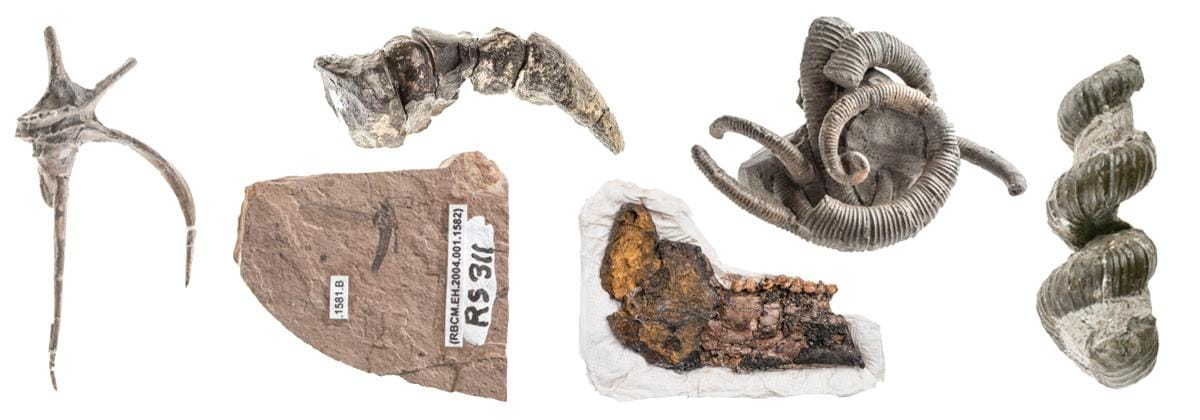
The Royal BC Museum’s palaeontology collection spans over 500 million years of life on Earth. Current collection strengths include Eocene plants and animals from ancient lakes across the Interior, marine invertebrates from the Nanaimo Group of Vancouver Island, and Ice Age mammals from southern Vancouver Island. The collection also hosts rare and scientifically significant specimens from the Burgess Shale, dinosaurs and other Cretaceous reptiles from the Sustut Basin of northern BC (including BC’s first unique dinosaur species, Ferrisaurus sustutensis), Triassic fish and ichthyosaurs from northeastern BC and Vancouver Island, Oligocene marine mammals from Vancouver Island and Ediacaran fossils from Mount Robson.
New specimens are added to the collection through museum-led field expeditions, donated discoveries by residents from across British Columbia and permit agreements with academic researchers and industrial operations.
The collection has a small fossil preparation lab where specimens are cleaned, stabilized and prepared for research, display and storage.
Search the collections database.

Palaeontology collections manager and researcher Derek Larson with fossil fish from the Leahy-Langevin collection of specimens from the McAbee Fossil Beds.
Curator of palaeontology Dr. Victoria Arbour is a vertebrate palaeontologist with a particular interest in dinosaurs and the animals that lived alongside them. She leads field expeditions to northern BC to search for new dinosaur fossils, and studies many of the fascinating vertebrate fossils already in the museum’s collection. Dr. Arbour is an adjunct professor at the University of Victoria and supervises undergraduate and graduate student researchers with support from an NSERC Discovery Grant; prospective students are encouraged to contact her regarding research opportunities. Collections manager and researcher Derek Larson is also a vertebrate palaeontologist with expertise in fossil turtles and dinosaurs. You can learn more about palaeontological research at the museum at the Research Portal and Learning Portal, and by following our social media channels

Curator of palaeontology Dr. Victoria Arbour examines the bones of the dinosaur Ferrisaurus sustutensis in the palaeontology collection. Photograph courtesy of Brandy Yanchyk.
Fossils are protected by law in British Columbia and are managed via the Fossil Management Framework. If you have found a fossil on Crown land in BC, you are the custodian (not the owner) of that fossil on behalf of all British Columbians. Fossils in some parts of BC are common and easy to find, but in other places they can be extremely rare. We encourage anyone who has found a fossil, especially an unusual or rare fossil, or a fossil from an unexpected place, to contact the curator. Fossils do the most good for science and education when they are housed in a museum!
Academic researchers wishing to collect fossils on Crown land in BC must contact the Fossil Management Office of the Heritage Branch (fossil.management@gov.bc.ca) to arrange authorization. Part of that authorization includes signing a repository agreement with the Royal BC Museum and following our repository standards. Please contact the curator of palaeontology for more information. We recommend contacting the Heritage Branch at least three months in advance of prospective fieldwork and, for summer fieldwork, no later than the preceding February.
Fossils cannot be collected in provincial or national parks without a permit. Please contact the relevant BC Parks or Parks Canada management office for more information.
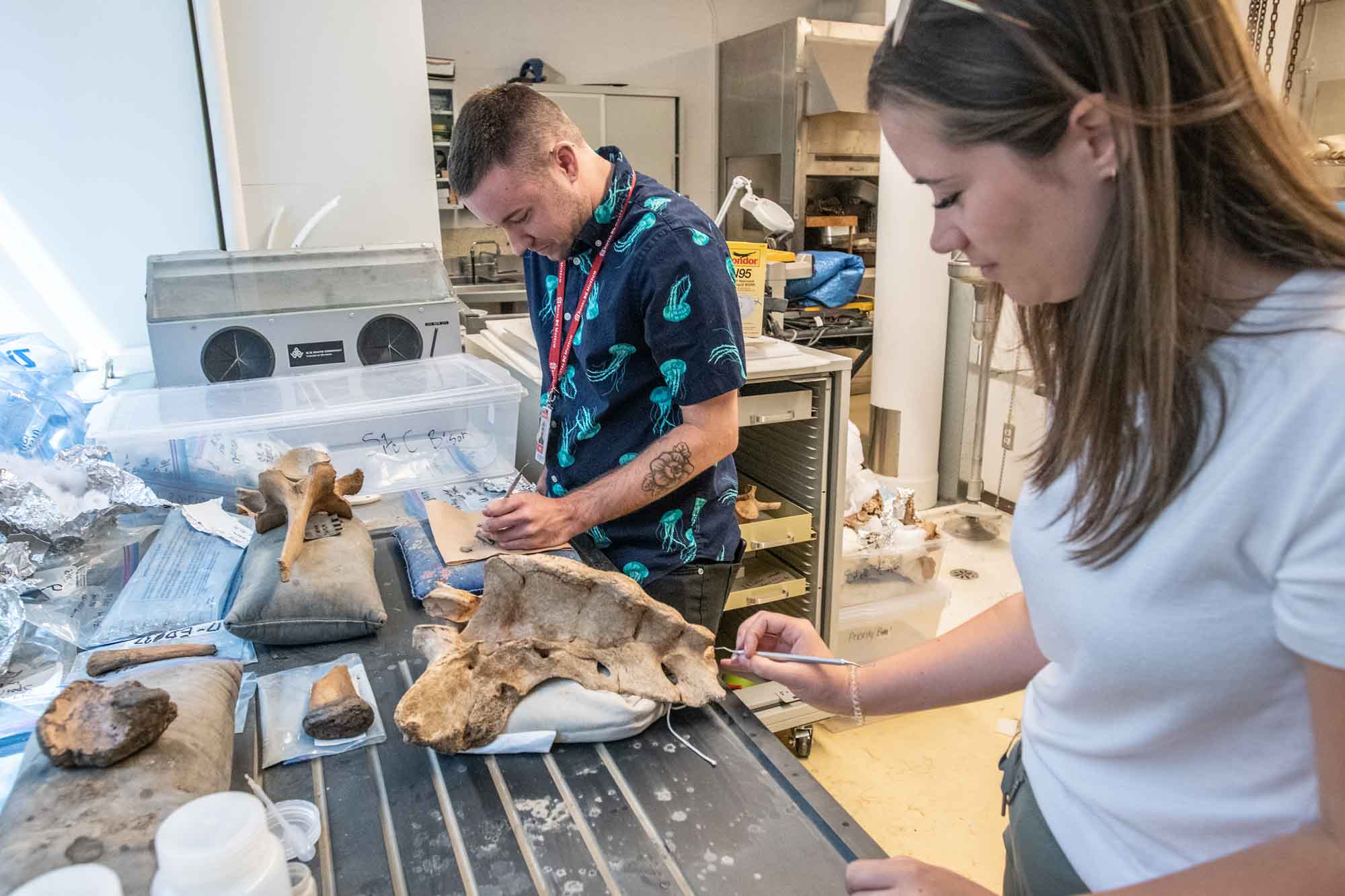
Auxiliary palaeontology collections manager Jaclyn Richmond (right) and volunteer Lucas Goulet (left) clean up an Ice Age bison fossil in the palaeontology prep lab.
The palaeontology team is grateful to the many volunteers who donate their time to work in the collection. Volunteers assist with many different tasks, including unpacking new fossils, creating custom foam supports in trays, sorting and identifying fossils, painting labels for cataloguing and more. Most tasks do not require a specific educational background but do require the ability to safely hold fragile fossils. If you are interested in volunteering in the collection, please contact the volunteer services coordinator.
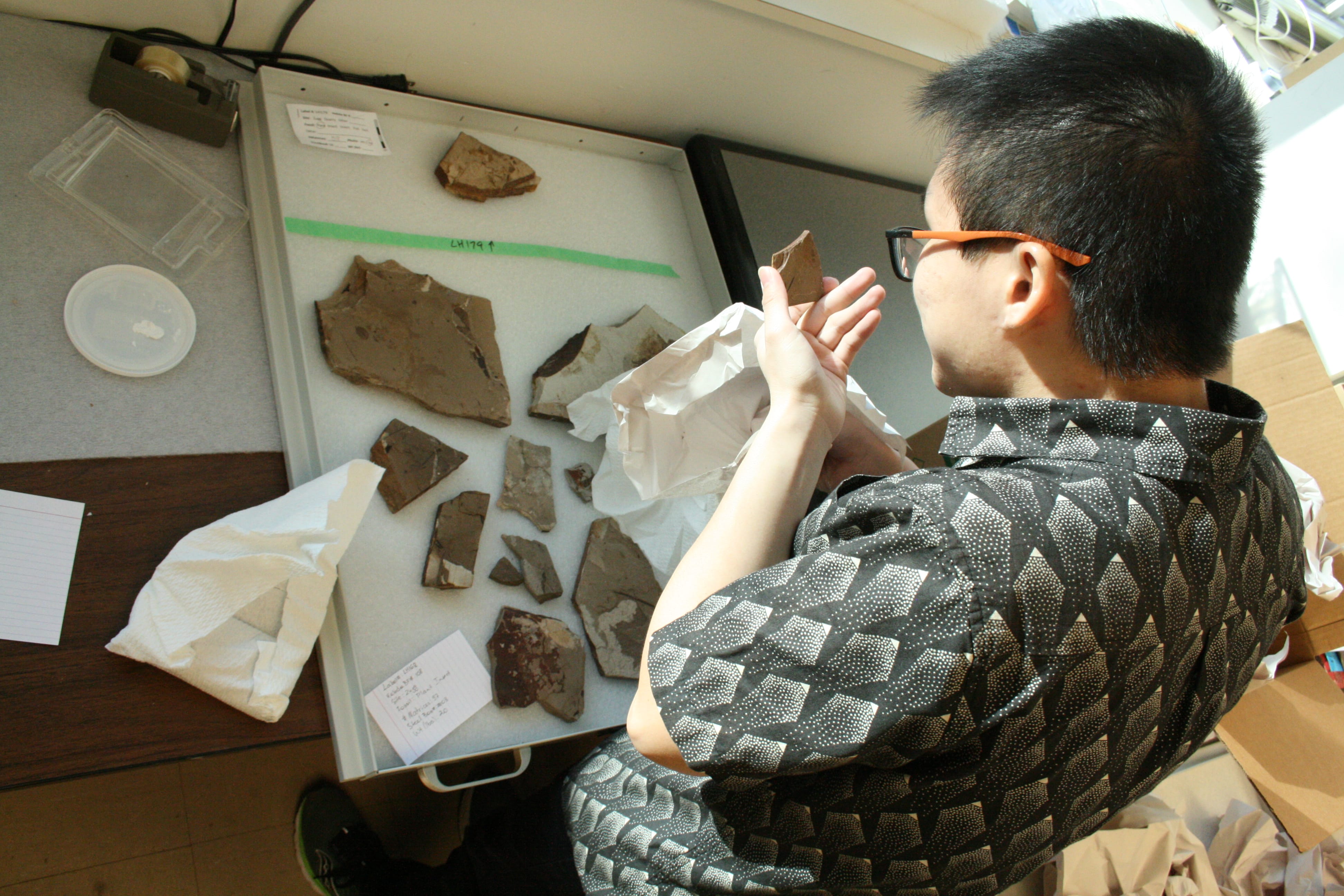
Palaeontology volunteer Dazhong Huang carefully unwraps Eocene plant and insect fossils from the Leahy-Langevin donation—18,000 specimens collected from the McAbee Fossil Beds.
Qualified researchers who wish to study fossils in the collection must contact the curator and collections manager in advance of their visit or to arrange a loan of specimens.
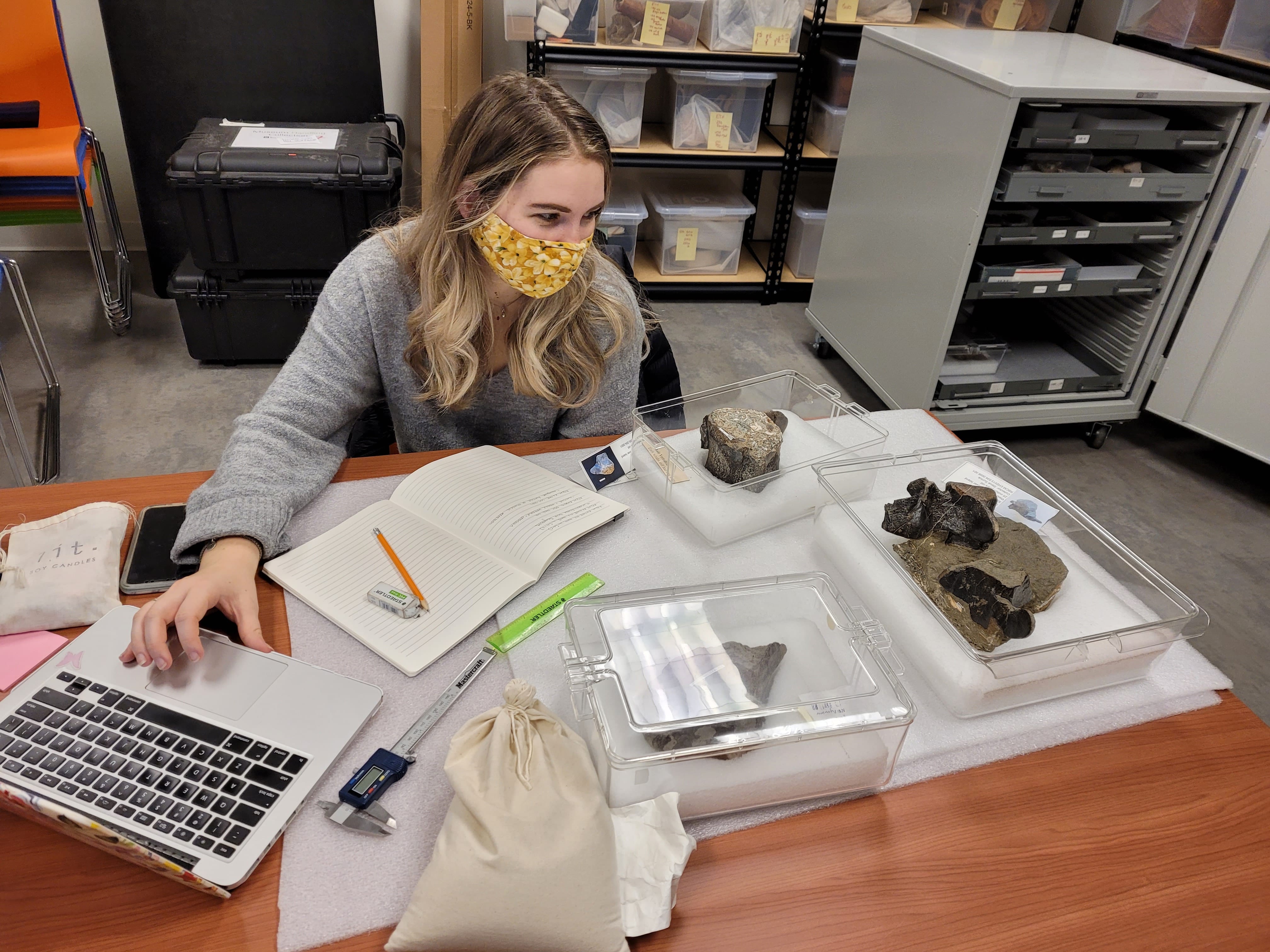
University of Victoria undergraduate science student Elizabeth Rohlicek studying 25-million-year-old whale fossils from the palaeontology collection.
In-person and virtual behind-the-scenes tours of the collection for schools and the general public are occasionally offered through the museum’s Learning programs. Please visit the Learning pages for more information.
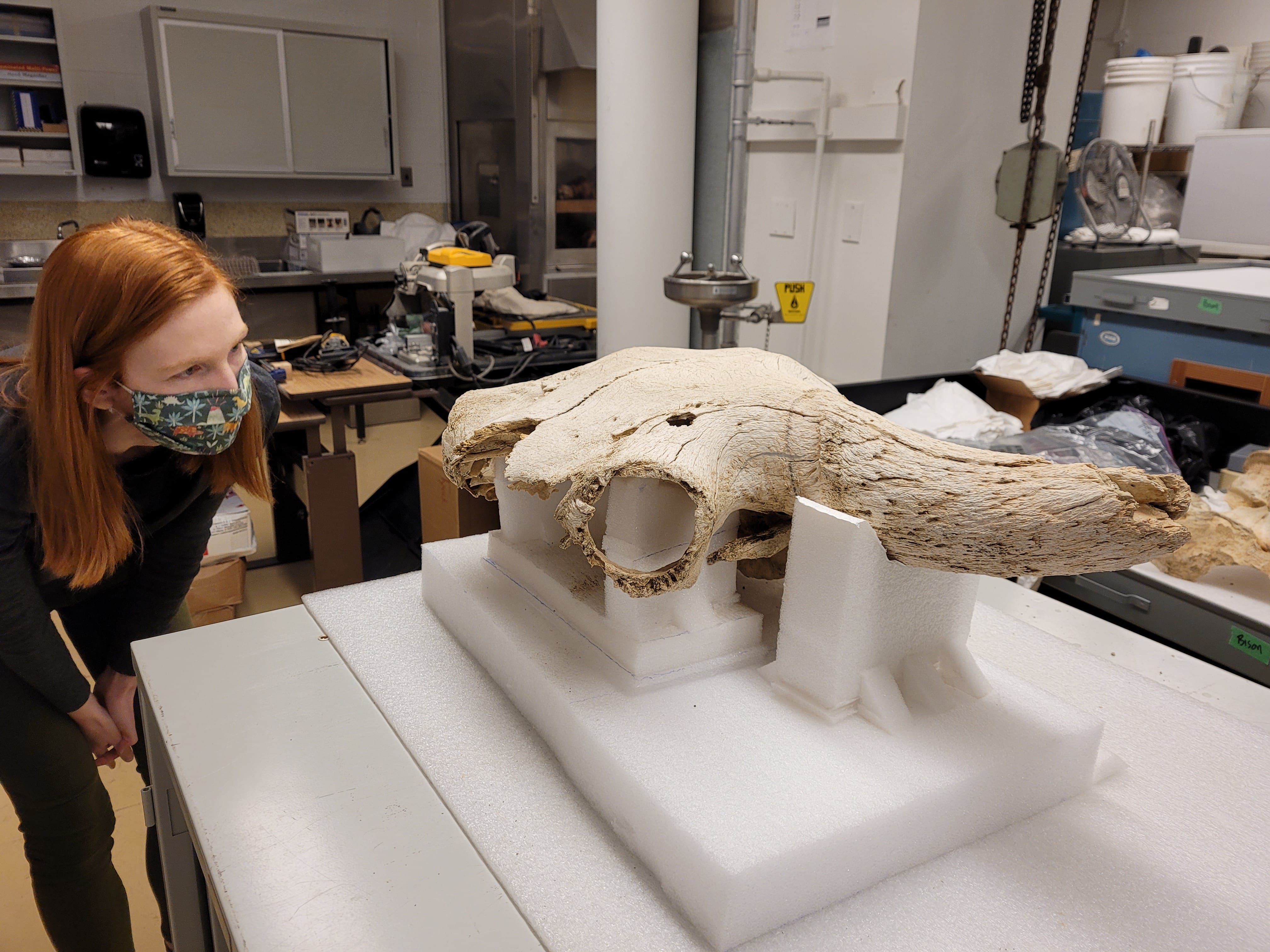
Fossil preparator Shauna Edgar examines an ice age bison skull undergoing conservation treatments in the palaeontology lab.
Fossils from the museum’s palaeontology collection are highlighted in the Natural History gallery on the second floor of the museum and periodically in special exhibitions. Please visit the Exhibitions page for more information on current exhibitions.